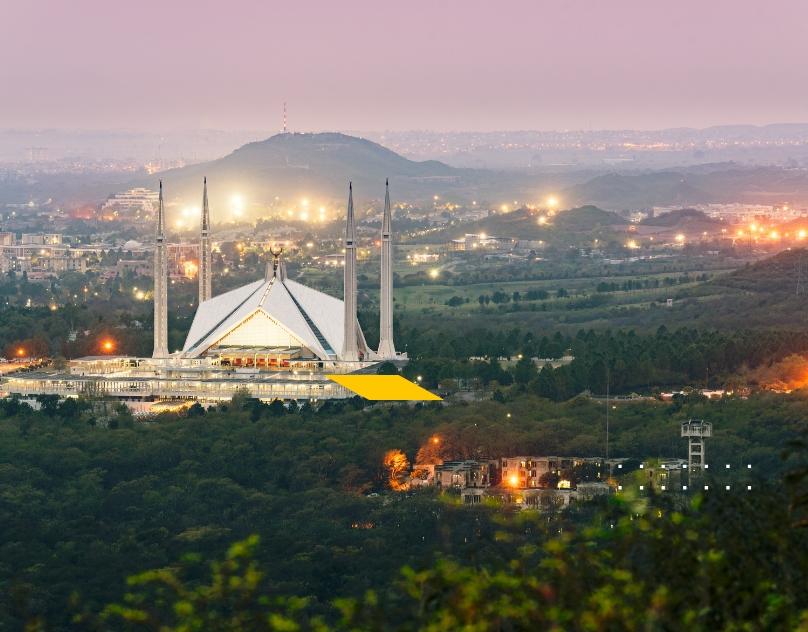The Rise of Eco-Friendly Communities in Pakistan: A Real Estate Revolution

As environmental concerns continue to rise globally, Pakistan is experiencing a significant shift toward eco-friendly communities in its real estate sector. This transformation is driven by increasing awareness of sustainability and the need for responsible urban development. One notable example of this trend is DHA Gandhara Islamabad, which embodies the principles of green living while providing modern amenities. This article explores the rise of eco-friendly communities in Pakistan, highlighting their benefits, challenges, and the future of sustainable living.
1. Understanding Eco-Friendly Communities
Eco-friendly communities are residential areas designed with sustainability in mind. They incorporate green building practices, energy-efficient technologies, and environmentally conscious landscaping to minimize their ecological footprint. These communities aim to create a harmonious balance between nature and urban living, promoting a healthier lifestyle for residents.In Pakistan, the concept of eco-friendly communities is gaining traction as urbanization accelerates and environmental issues become more pressing. Developments like DHA Gandhara Islamabad are leading the way by integrating sustainable practices into their design and infrastructure.
2. Benefits of Eco-Friendly Communities
The rise of eco-friendly communities offers numerous benefits for residents and the environment:
- Healthier Living Environments: Eco-friendly homes often feature better air quality, natural lighting, and green spaces that promote physical and mental well-being. Access to parks and recreational areas encourages outdoor activities, fostering a healthier lifestyle.
- Lower Utility Costs: Energy-efficient designs and renewable energy sources can significantly reduce utility bills for residents. Sustainable practices, such as rainwater harvesting and solar energy systems, contribute to long-term savings.
- Increased Property Values: As demand for sustainable living options grows, properties in eco-friendly communities are likely to appreciate in value. Buyers are increasingly willing to invest in homes that align with their values regarding environmental responsibility.
- Community Engagement: Eco-friendly communities often foster a sense of belonging among residents who share similar values. This engagement leads to stronger social ties and collaborative efforts toward sustainability initiatives.
3. Key Features of Eco-Friendly Developments
Eco-friendly communities incorporate various features that contribute to their sustainability:
- Green Building Materials: The use of locally sourced, recycled, and sustainable materials is a hallmark of eco-friendly construction. These materials reduce environmental impact while ensuring durability and aesthetic appeal.
- Energy Efficiency: Incorporating energy-efficient appliances, insulation, and smart home technologies minimizes energy consumption. Developers are increasingly focusing on designs that maximize natural ventilation and lighting.
- Sustainable Transportation Options: Many eco-friendly communities promote walking, biking, and public transportation as alternatives to personal vehicles. This reduces traffic congestion and air pollution while encouraging a more active lifestyle.
- Waste Management Systems: Effective waste management practices are essential for maintaining cleanliness and reducing landfill contributions. Eco-friendly communities often implement recycling programs and composting initiatives to manage waste responsibly.
4. Challenges Facing Eco-Friendly Developments
Despite the numerous benefits, the rise of eco-friendly communities in Pakistan faces several challenges:
- Initial Costs: The upfront costs associated with sustainable building practices can be higher than traditional construction methods. While these costs may be offset by long-term savings, they can deter some developers from adopting green technologies.
- Lack of Awareness: Many potential buyers remain unaware of the benefits of eco-friendly living or may prioritize immediate affordability over sustainability. Raising awareness about the advantages of eco-friendly communities is crucial for driving demand.
- Regulatory Hurdles: The absence of comprehensive regulations supporting sustainable development can hinder progress in this sector. Policymakers must establish clear guidelines that encourage eco-friendly practices while ensuring compliance with safety standards.
5. The Future of Eco-Friendly Communities in Pakistan
The future of eco-friendly communities in Pakistan looks promising as more developers recognize the importance of sustainability in real estate. Projects like DHA Phase 9 Gandhara Islamabad are setting benchmarks for integrating green practices into urban development.As government policies increasingly support sustainable initiatives—such as tax incentives for green building projects—the market for eco-friendly properties is likely to expand further. Additionally, growing consumer demand for environmentally responsible living spaces will drive innovation within the real estate sector.
Conclusion
The rise of eco-friendly communities represents a significant shift in Pakistan's real estate landscape, reflecting a growing commitment to sustainability amid pressing environmental challenges. Developments like DHA Gandhara Islamabad exemplify how modern living can harmonize with nature while promoting healthier lifestyles for residents.As awareness continues to grow and regulatory support strengthens, the future looks bright for eco-friendly communities in Pakistan. By embracing sustainable practices, these developments not only contribute to environmental preservation but also enhance the quality of life for residents—paving the way for a greener future.
- Art
- Causes
- Crafts
- Dance
- Drinks
- Film
- Fitness
- Food
- Juegos
- Gardening
- Health
- Home
- Literature
- Music
- Networking
- Other
- Party
- Religion
- Shopping
- Sports
- Theater
- Wellness
- IT, Cloud, Software and Technology


